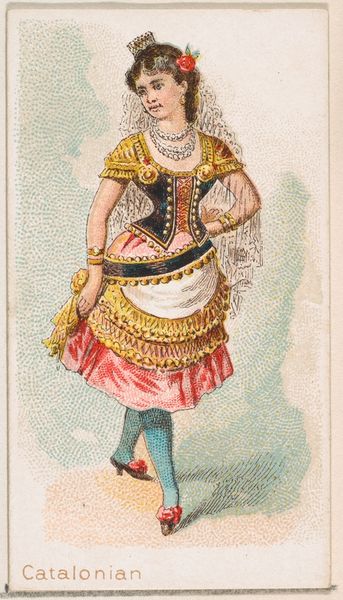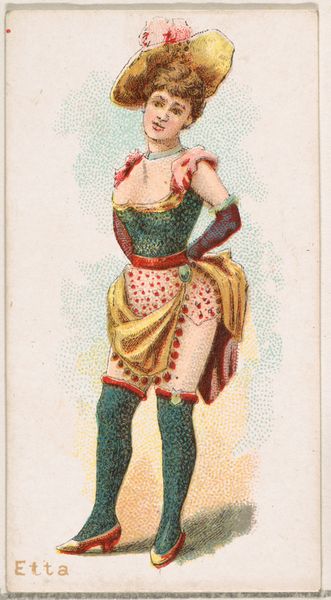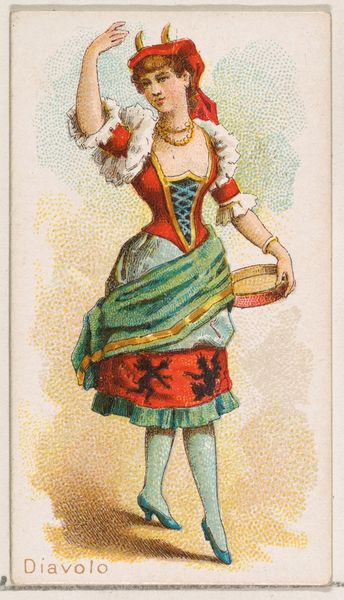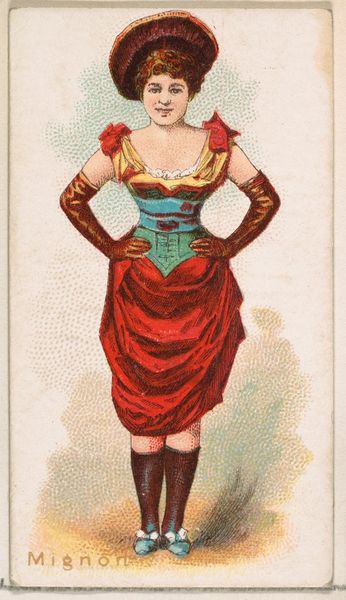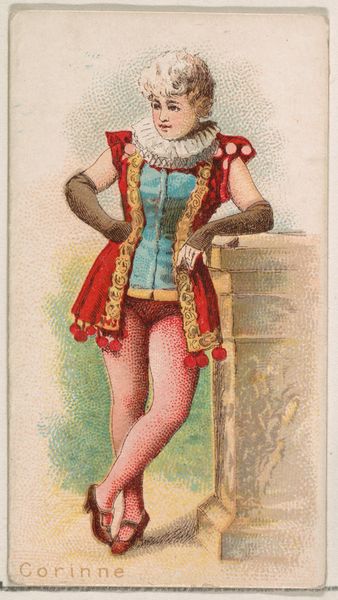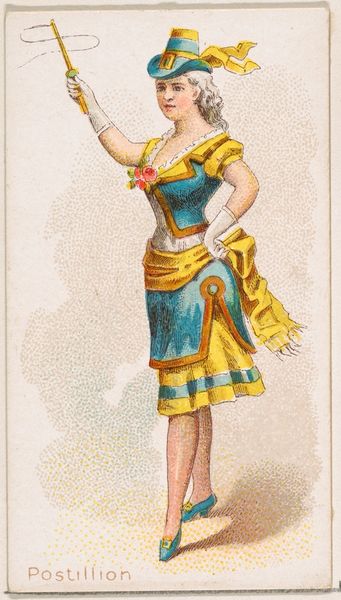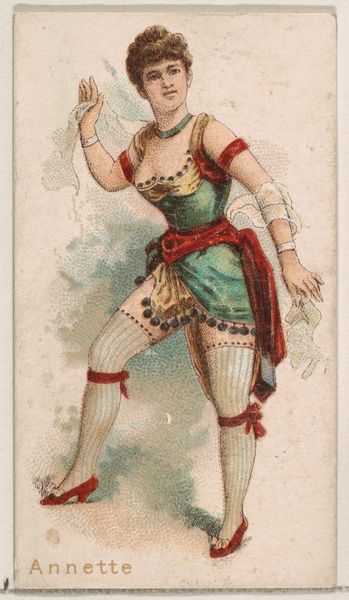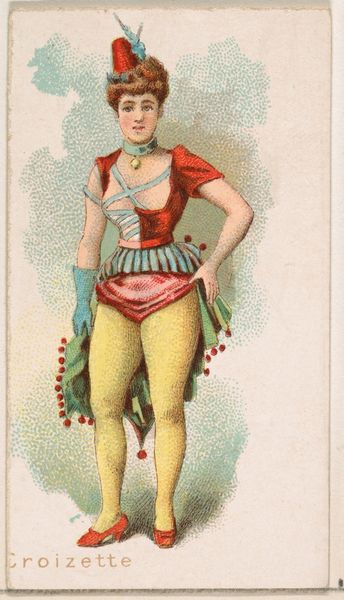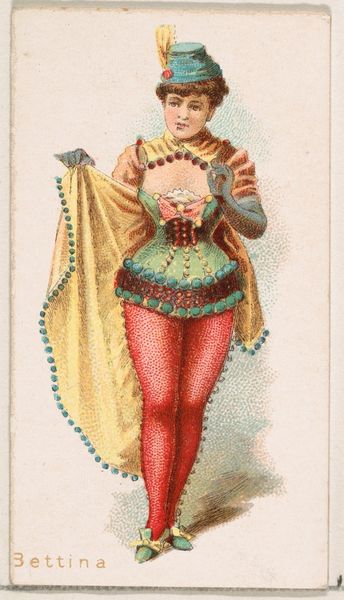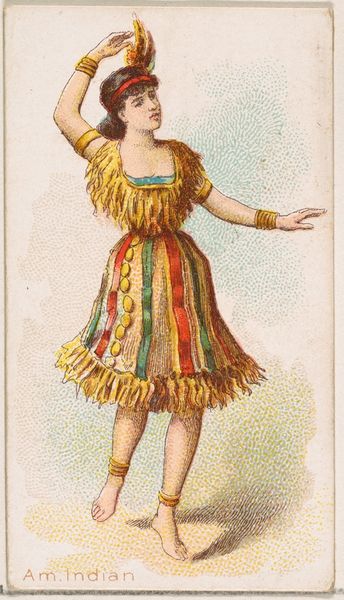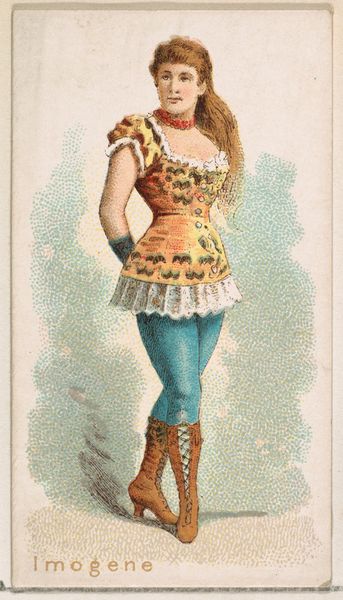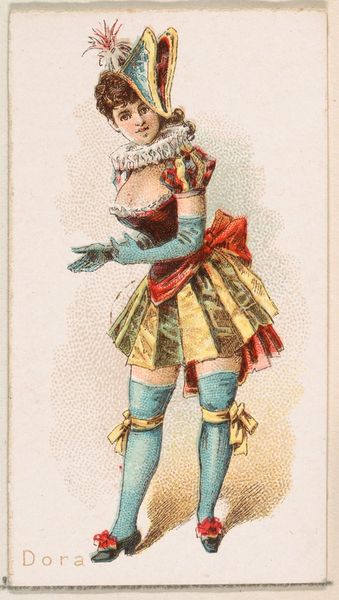
Nanette, from the Ballet Queens series (N182) issued by Wm. S. Kimball & Co. 1889
0:00
0:00
drawing, coloured-pencil, print
#
portrait
#
drawing
#
coloured-pencil
# print
#
caricature
#
caricature
#
coloured pencil
#
genre-painting
#
watercolor
Dimensions: Sheet: 2 3/4 × 1 1/2 in. (7 × 3.8 cm)
Copyright: Public Domain
Editor: This is "Nanette, from the Ballet Queens series," printed by Wm. S. Kimball & Co. in 1889, now at the Met. It's a coloured-pencil drawing that feels like a satirical take on the ballet dancers of the time. What do you make of it? Curator: The exaggerated proportions and the use of coloured pencil elevate her to the status of an icon, but with a wink. Think of playing cards, reliquaries, or votive images. What narratives do you see woven into her portrayal? Editor: I see the costume itself. The high waist and puffed sleeves resemble historic period costumes while the garish bright blue tights covered in beads feel cartoonish. Curator: Exactly! The beads tracing her legs, almost like rosary beads, evoke a sort of secular saint. Notice how her gaze seems fixed, unwavering, like the figures you see in Byzantine art, drawing on that deep well of cultural memory, while simultaneously mocking that rigidity. Editor: So, you’re saying she's both elevated and satirized? Curator: Precisely. It taps into the public's fascination with these "Ballet Queens," but also subverts the glamour through caricature. What does that contrast say about the viewers of this print? What needs and anxieties does it meet? Editor: That the viewers probably had mixed feelings about these Ballet Queens. The public wanted to both admire them as artists and tear them down by highlighting, and even mocking, their imperfections. Curator: Yes, exactly. These images hold the tension between desire and derision, echoing anxieties about fame, morality, and the changing role of women in that era. The imagery offers so much when we understand what the artist subtly suggests about its place in society. Editor: It's interesting how a simple print reveals such complicated attitudes of the time! Curator: Indeed! Everyday images are full of rich historical, cultural, and psychological weight that connect us across time and inform our perspectives on the present.
Comments
No comments
Be the first to comment and join the conversation on the ultimate creative platform.

